This is the third in a series of articles that attempts to disclose some of the known issues playing behind the scenes in the Calico Complex and beyond…
SHELDON NATIONAL WILDLIFE REFUGE
Sitting on the edge of the BLM managed lands of some of the wild horse Herd Management Areas that comprise the Calico Complex is the Sheldon National Wildlife Refuge, also under the jurisdiction of the Secretary of the Interior but home to a very different set of rules regarding the management of horses and burros.
This home on the range where the antelope play calls wild horses and burros feral and sportsman openly lobby Congress to eradicate their populations completely. Click Here to learn more.
Public awareness of the Sheldon wild horses and burros sky rocketed after American Wild Horse Preservation Campaign (AWHPC) released an explicit and shocking undercover pictorial report of a June 2006 round up titled “The Reality of Round Ups: Attempt At A Cover Up”.
Included were graphic photos of dead foals found littered across the landscape, hog-tied foals, dead and injured horses in the holding pens and a veterinarian report citing the extreme trauma documented to foals as a result of the gather; some of whom survived and some whom did not.
Questions also exploded around the methods used by long-time BLM contractor Dave Cattoor of Cattoor Livestock Inc., to drive wild horses and burros to the traps and again evoked controversy as to whether helicopter driving could ever be considered humane or safe considering it was outlawed before due to its known detrimental results. (Editor’s Note: Despite criminal charges filed against Dave Cattoor in 1990 for “conspiracy and use of aircraft to capture wild horses and aiding and abetting….”, which led to the “said wild, unbranded horses to be sold and shipped by truck to Great Western Meats in Morton, Texas, to be slaughtered and processed”, BLM has continued to insist he does excellent work for them and excuses AWHPC’s shocking Sheldon report by citing it didn’t happen during a BLM gather…)
As public awareness grew about the Sheldon wild horses and burros, so did the conflict. Between 2006 and 2008, comments and protests poured into Refuge managers about continuing plans to round up all of the almost 2,000 estimated wild horses and burros. Of additional concern was how the now captured horses were being disposed of as some of the 2006 Sheldon horses were eventually found in Canadian livestock auctions headed for slaughter.
This home on the range where the antelope play calls wild horses and burros feral and sportsman openly lobby Congress to eradicate their populations completely. Click Here to learn more.
Public awareness of the Sheldon wild horses and burros sky rocketed after American Wild Horse Preservation Campaign (AWHPC) released an explicit and shocking undercover pictorial report of a June 2006 round up titled “The Reality of Round Ups: Attempt At A Cover Up”.
Included were graphic photos of dead foals found littered across the landscape, hog-tied foals, dead and injured horses in the holding pens and a veterinarian report citing the extreme trauma documented to foals as a result of the gather; some of whom survived and some whom did not.
Questions also exploded around the methods used by long-time BLM contractor Dave Cattoor of Cattoor Livestock Inc., to drive wild horses and burros to the traps and again evoked controversy as to whether helicopter driving could ever be considered humane or safe considering it was outlawed before due to its known detrimental results. (Editor’s Note: Despite criminal charges filed against Dave Cattoor in 1990 for “conspiracy and use of aircraft to capture wild horses and aiding and abetting….”, which led to the “said wild, unbranded horses to be sold and shipped by truck to Great Western Meats in Morton, Texas, to be slaughtered and processed”, BLM has continued to insist he does excellent work for them and excuses AWHPC’s shocking Sheldon report by citing it didn’t happen during a BLM gather…)
As public awareness grew about the Sheldon wild horses and burros, so did the conflict. Between 2006 and 2008, comments and protests poured into Refuge managers about continuing plans to round up all of the almost 2,000 estimated wild horses and burros. Of additional concern was how the now captured horses were being disposed of as some of the 2006 Sheldon horses were eventually found in Canadian livestock auctions headed for slaughter.
According to U.S. Fish & Wildlife Service (USFWS), wild horses were documented in the area before Sheldon became a wildlife refuge in 1931. Local ranchers managed horses there by mixing domestic horses with the original Spanish horses of the area (who have a documented presence dating back to the 1600’s) as Sheldon became a stocking and Calvary Re-Mount location during the late 1800’s and early 1900’s.
In 1971, when the Wild Free-Roaming Horse and Burro Act was passed, Sheldon was co-managed by both USFWS and BLM. For a brief five years, the Sheldon wild horses and burros were protected from “capture, branding, harassment, or death” under the auspices of the Act until Congress amended the National Wildlife Refuge Administration Act with the Game Range Bill in 1976 and USFWS became the sole managing agency. As a result, the Secretary of the Interior and all subsequent USFWS policies deny any protections under the Act are entitled to these wild horses and burros.
In 1977, Refuge managers created The Sheldon Horse Management Plan, which still stands as the guiding framework for how wild horses and burros would be handled. At that time, a herd size of 75-125 horses was established. USFWS estimated approximately 800 wild horses inhabited the Refuge at the time but were initiating plans for the immediate round up of 700 wild horses due to officials stating they were causing severe impacts to wildlife habitat which required “emergency removals”.
USFWS also reported 3,600 cattle grazed the Refuge then and used about 24,000 AUMs annually. It is interesting to note that a letter submitted by Friends of the Earth during the public comment process stated, “Friends of the Earth support this proposal [the removal of 700 wild horses]. However, last year’s onsight tour of Refuge and Range confirmed our suspicions that the major problem at Sheldon is not caused by the wild horses but rather by the overgrazing of cattle, particularly on the range portion of the complex.”
Unlike the recent revelations by BLM in the Calico Complex EA last fall, which speculated on wild horses migrating back and forth between Sheldon and BLM managed lands, in 1977, USFWS wrote, “Nearly all of the exterior boundary of the Sheldon Range is fenced…so in all practicality, the horses found within the Range are separate and distinct populations.”
In 1980, USFWS issued their Renewable Natural Resource Management Plan and Final Environmental Impact Statement for the Refuge, which continues to be the guiding management plan for the Refuge in its entirety. Included within its framework was the approval of allowing a range of 75-125 horses and 30-60 burros to continue to exist on the Refuge in conformance with The Sheldon Horse Management Plan.
In 1982, the Secretary of the Interior approved a new policy outlining the role and management of “feral horses and burros” within the National Wildlife Refuge System, (7 RM 6.1). The policy specifically states that, “It is the policy of the Service that feral horse and burro populations will not be maintained on Sheldon, Hart Mountain, and Kofa NWR’s. Feral horses and burros on these refuges will be removed in accordance with the provisions of 50 CFR 30.12 and Section 6.9, below. Feral horses and burros shall not be introduced, established, or allowed to become established on any national wildlife refuge.”
However, due to the 1980 decision, prior officials had legally authorized wild horses and burros at Sheldon. Until a new Record of Decision is signed, management of the equids is in a legal quagmire as the current Service policy demanding wild horses and burros be totally eliminated on Sheldon conflicts with the 1980 decision to allow them to be maintained.
In 1982, USFWS also developed policies for management of wild horses and burros in areas where animals may wander back and forth between refuge lands and public lands. Some of these policies state;
a) “In the case where horses and burros wander back and forth between refuge lands and public lands, cooperative management planning will occur with the appropriate agency (e.g., BLM) and a joint management plan must be developed".
b) "Close coordination with the Bureau of Land Management is necessary to assure refuge objectives receive consideration when population goals are set on adjacent public lands".
c) “Appropriate population levels are to be determined by the following criteria: vegetation conditions and trend; availability of water; degree of conflicts with all wildlife forms; compatibility with refuge objectives; and BLM horse/burro management policy on adjoining lands” and,
d) USFWS is required to “comply with the Wild Free-Roaming Horse and Burro Act of 1971, where applicable.”
In 1994, USFWS officially closed the Refuge to livestock grazing as a result of the private purchase of the grazing permits, which were then donated to the USFWS for retirement.
In 1996, a Memorandum of Understanding (MOU) was signed with BLM regarding cooperative management of wild horses and burros that range between BLM and USFWS managed lands. The MOU stated that, "BLM State Directors and FWS Area Managers will develop agreements and, as appropriate, joint plans for the management of wild horses and burros which range interchangeably upon the lands of the other".
The question now becomes, how do officials determine which wild horses stay exclusively on Sheldon to be managed solely under USFWS regulations and those who “range interchangeably upon the lands of the other”.
In 2001, USFWS issued a Memorandum, which gave them authority to contract out or broker the disposal of horses and burros removed from the Refuge. The Memo stated that, “The chosen contractor will be required to arrange for adoption or otherwise provide for disposition of the horses captured in a manner that prevents slaughter for the meat market to the maximum extent possible and also prevent humane on-site euthanasia except in cases of debilitating injury or disease.” Prior to this, removed wild horses and burros were disposed of via auctions and any unsold animals were destroyed.
Since then, USFWS has been working on an adoption program for horses and burros removed from Sheldon and coordinates with “organizations or individuals acting as adoption agents for the refuge.” However, currently horses and burros are not required to be branded upon leaving the Refuge nor is there a system established to track them or follow up with adopters.
In 1971, when the Wild Free-Roaming Horse and Burro Act was passed, Sheldon was co-managed by both USFWS and BLM. For a brief five years, the Sheldon wild horses and burros were protected from “capture, branding, harassment, or death” under the auspices of the Act until Congress amended the National Wildlife Refuge Administration Act with the Game Range Bill in 1976 and USFWS became the sole managing agency. As a result, the Secretary of the Interior and all subsequent USFWS policies deny any protections under the Act are entitled to these wild horses and burros.
In 1977, Refuge managers created The Sheldon Horse Management Plan, which still stands as the guiding framework for how wild horses and burros would be handled. At that time, a herd size of 75-125 horses was established. USFWS estimated approximately 800 wild horses inhabited the Refuge at the time but were initiating plans for the immediate round up of 700 wild horses due to officials stating they were causing severe impacts to wildlife habitat which required “emergency removals”.
USFWS also reported 3,600 cattle grazed the Refuge then and used about 24,000 AUMs annually. It is interesting to note that a letter submitted by Friends of the Earth during the public comment process stated, “Friends of the Earth support this proposal [the removal of 700 wild horses]. However, last year’s onsight tour of Refuge and Range confirmed our suspicions that the major problem at Sheldon is not caused by the wild horses but rather by the overgrazing of cattle, particularly on the range portion of the complex.”
Unlike the recent revelations by BLM in the Calico Complex EA last fall, which speculated on wild horses migrating back and forth between Sheldon and BLM managed lands, in 1977, USFWS wrote, “Nearly all of the exterior boundary of the Sheldon Range is fenced…so in all practicality, the horses found within the Range are separate and distinct populations.”
In 1980, USFWS issued their Renewable Natural Resource Management Plan and Final Environmental Impact Statement for the Refuge, which continues to be the guiding management plan for the Refuge in its entirety. Included within its framework was the approval of allowing a range of 75-125 horses and 30-60 burros to continue to exist on the Refuge in conformance with The Sheldon Horse Management Plan.
In 1982, the Secretary of the Interior approved a new policy outlining the role and management of “feral horses and burros” within the National Wildlife Refuge System, (7 RM 6.1). The policy specifically states that, “It is the policy of the Service that feral horse and burro populations will not be maintained on Sheldon, Hart Mountain, and Kofa NWR’s. Feral horses and burros on these refuges will be removed in accordance with the provisions of 50 CFR 30.12 and Section 6.9, below. Feral horses and burros shall not be introduced, established, or allowed to become established on any national wildlife refuge.”
However, due to the 1980 decision, prior officials had legally authorized wild horses and burros at Sheldon. Until a new Record of Decision is signed, management of the equids is in a legal quagmire as the current Service policy demanding wild horses and burros be totally eliminated on Sheldon conflicts with the 1980 decision to allow them to be maintained.
In 1982, USFWS also developed policies for management of wild horses and burros in areas where animals may wander back and forth between refuge lands and public lands. Some of these policies state;
a) “In the case where horses and burros wander back and forth between refuge lands and public lands, cooperative management planning will occur with the appropriate agency (e.g., BLM) and a joint management plan must be developed".
b) "Close coordination with the Bureau of Land Management is necessary to assure refuge objectives receive consideration when population goals are set on adjacent public lands".
c) “Appropriate population levels are to be determined by the following criteria: vegetation conditions and trend; availability of water; degree of conflicts with all wildlife forms; compatibility with refuge objectives; and BLM horse/burro management policy on adjoining lands” and,
d) USFWS is required to “comply with the Wild Free-Roaming Horse and Burro Act of 1971, where applicable.”
In 1994, USFWS officially closed the Refuge to livestock grazing as a result of the private purchase of the grazing permits, which were then donated to the USFWS for retirement.
In 1996, a Memorandum of Understanding (MOU) was signed with BLM regarding cooperative management of wild horses and burros that range between BLM and USFWS managed lands. The MOU stated that, "BLM State Directors and FWS Area Managers will develop agreements and, as appropriate, joint plans for the management of wild horses and burros which range interchangeably upon the lands of the other".
The question now becomes, how do officials determine which wild horses stay exclusively on Sheldon to be managed solely under USFWS regulations and those who “range interchangeably upon the lands of the other”.
In 2001, USFWS issued a Memorandum, which gave them authority to contract out or broker the disposal of horses and burros removed from the Refuge. The Memo stated that, “The chosen contractor will be required to arrange for adoption or otherwise provide for disposition of the horses captured in a manner that prevents slaughter for the meat market to the maximum extent possible and also prevent humane on-site euthanasia except in cases of debilitating injury or disease.” Prior to this, removed wild horses and burros were disposed of via auctions and any unsold animals were destroyed.
Since then, USFWS has been working on an adoption program for horses and burros removed from Sheldon and coordinates with “organizations or individuals acting as adoption agents for the refuge.” However, currently horses and burros are not required to be branded upon leaving the Refuge nor is there a system established to track them or follow up with adopters.
 Capture horses from Sheldon's 2006 round up.
Capture horses from Sheldon's 2006 round up.Courtesy of American Wild Horse Preservation Campaign
THE BATTLE
According to USFWS records, approximately 3,000 horses and 300 burros have been removed from the Refuge between 1980 and 2006.
A population graph provided by Sheldon officials reports horse populations were kept relatively stable between 1979 and 1996 but due to funding limitations, removals stopped and managers claimed populations exploded from 600 to 2,200 in just eight years when 772 horses and 99 burros were finally removed in 2004.

In 2006, the Service went back for more with over 330 horses being captured and removed. This round up became the source of AWHPC’s “Attempt At A Cover-Up”, a story that first broke by a Special Research Group who uncovered a slew of disturbing information, some of which included:
> 16 to 18 mares were found in the pens showing signs of recently giving birth but had no foals with them. Despite USFWS requiring the public to stay at least two miles away from the gather operations, it is estimated at least nine foals died or were aborted in the pens and about fifteen foals were probably left to die a slow death in the high desert. Three of these foals survived days of abandonment, and one foal that arrived with the adults survived trampling in the pens.
> USFWS “adoption program” prohibited individuals or organizations from adopting directly from the Refuge. Only three “carefully screened” contractors were allowed to take the horses and only in mass truckloads. USFWS also paid the contractors $300.00 p/horse to haul them away.
> Two of these contractors, Forever Free Mustangs and Gary Graham, caused serious concerns as to what was happening to the horses once they arrived. Background checks revealed the Graham address was virtually a Grand Central Station of horseslaughter while Forever Free Mustangs were able to unload truckload after truckload of horses to “local adopters” that defied even the best sanctuary’s adoption average. To learn more, Click Here.
In response to the disastrous June 2006 round up, Congressional Representative Nick Rahall wrote USFWS Director Dale Hall on July 19, 2006, requesting a “cease and desist” on any further horse and burro removals and cited 26-year old management plans that failed to even remotely provide current information on the Refuge. Click Here to view Representative Rahall’s letter.
In April 2007, Sheldon released a Preliminary EA proposing to remove horses and burros from the Refuge “at the fastest rate possible”. A fire storm of protests from wild horse and burro advocates flooded the desks of officials due to what many considered a less-than-honest evaluation and continuing concerns for safe and humane treatment of the horses; both during the round ups as well as where they would end up.
Two months later, Refuge managers issued their final decision in June with virtually no changes to the original proposal and little concern for addressing Rahall’s requests.
In response, on July 18th, In Defense of Animals (IDA) and attorneys at Meyer Glitzenstein & Crystal, a Washington D.C. based pubic interest firm specializing in environmental litigation, sent an urgent letter to USFWS warning of several documented NEPA violations in the proposed removals and warned USFWS that pushing ahead with the round ups would violate federal law.
So in September 2007, USFWS issued a new EA and a new plan to manage horses and burros until they completed their Comprehensive Conservation Plan, which is projected for release sometime in 2010.
The crux of September's new plan centered around aerial surveys USFWS and Nevada Department of Wildlife (NDOW) conducted in June of 2007, which found 50% less horses on the Refuge; USFWS now reported horses magically dropped from the April estimate of 1,500 to just 800 horses two months later.
USFWS then told the public they could only speculate as to where the horses had gone but theorized approximately 700 horses had “migrated” to BLM lands over the winter and fence repairs completed in the spring prevented their return to Sheldon.
According to Jim Nelson, then President of Nevada Bighorns Unlimited (NBU), both the aerial surveys and fence repairs were paid for by NBU, who refer to wild horse and burro advocates as “the opposition”, despite NBU Board Member Larry Johnson still currently serving on the National Wild Horse & Burro Advisory Board. Click Here to learn more.
As a result of so many horses now reported as missing from the Refuge, USFWS postponed all further round up plans for 2007.
In an attempt to discover where the Sheldon horses may have “migrated too”, follow up emails were sent to Paul Steblein, Supervisor of Sheldon, BLMs National Program Office Wild Horse & Burro Lead Dean Bolstad and BLM Wild Horse & Burro Leads from Nevada, California and Oregon on 9/14/07, 9/18/07 and 10/26/07 requesting where officials believe the most likely places the Sheldon horses had gone too. To date, not one of them ever responded….
In April 2008, a revised EA was released as Sheldon officials proposed an interim management plan for horses and burros until the Comprehensive Conservation Plan was finalized. The proposal was to allow the population to stay stable at about 800 horses and 90 burros with round ups only conducted to remove the equivalent of the projected foaling increase at about 140-180 horses and 15-20 burros a year.
Sheldon managers also approved utilizing fertility control at the request of advocates. However, officials did not go in the direction advocates had assumed, specifically, by using reversible pzp on mares. Instead, they began implementing permanent sterilization measures.
According to a BLM Team Conference Call Report in 2008 obtained via FOIA, Sheldon managers began spaying mares and currently, we can confirm at least 30 mares were permanently spayed with 3 dying in the process. Geldings of stallions returned to the range has also been reported but Sheldon Supervisor Paul Steblein has so far refused to provide any further information about what has been happening at Sheldon over the last two years.
Round ups have transpired with little to no public notices and no information provided as to how many have been removed, when they were removed or how many have been sterilized. Questions to Sheldon officials continue to go unanswered.
On September 2, 2009, a lawsuit was filed by Laura Leigh and Cowan Law Offices against continuing Sheldon’s horse and burro management plans, which also requested an injunction to halt any further round ups or shipments of horses. Some of the issues listed in the complaint included sordid histories of contractors, lack of tracking systems such as brands or microchips on horses, horses previously removed found headed to slaughter, illegal seizure of Nevada State property and illegal transportation of horses across state lines. Click Here to read the full complaint.
On April 15, 2010, Equine Welfare Alliance (EWA) issued a press release titled, In The Spirit of Compromise, which stated that Laura Leigh had dropped the lawsuit “in a gesture of support for the concept of cooperative dialogue” with hopes of being able to move forward in a constructive relationship with officials after announcing they are in “the planning states of creating a two million acre management complex for wild horses in Southeast Oregon, Northeast California, Northwestern Nevada and the Sheldon NWR located in Northeast Nevada”, currently coined as the Tri-State Mega-Complex.
While Steblein, the current Complex Manager for the Sheldon Refuge was saying, “In general I am very happy about this. This is an opportunity to create constructive ways to manage horses across the landscape” to EWA and, “This is the time where we stop pointing fingers and figure out how to solve this”, he continued to stonewall questions about what was happening on the ground.
First, early this year, questions were submitted to USFWS's general website requesting numbers about horse and burro removals over the last two years – but no one responded. So, a month later on February 26, 2010, I called the office and merely left my first name requesting Mr. Steblein call me back. And what do you know? He did!
I asked Mr. Steblein questions about gathers, removals, contraceptives, and census methods, all of which he kept stating that since he didn’t have the records in front of him, he couldn’t quote exact numbers. He promised to follow up via email with both numbers and reports so, I sent a follow up email repeating the same questions I asked him via phone. And it went unanswered. So I asked again on April 10, 2010, and it too has gone unanswered.... (Apparently, it's important to not identify yourself completely or what you are interested in talking about or you won’t receive a reply.)
If Mr. Steblein is really interested in creating constructive ways to solve problems, why isn’t he or anybody from USFWS for that matter, answering questions about what has been happening to the Sheldon wild horses and burros for the last two years?
Well, my guess is because there is a plan in the works….
A population graph provided by Sheldon officials reports horse populations were kept relatively stable between 1979 and 1996 but due to funding limitations, removals stopped and managers claimed populations exploded from 600 to 2,200 in just eight years when 772 horses and 99 burros were finally removed in 2004.

In 2006, the Service went back for more with over 330 horses being captured and removed. This round up became the source of AWHPC’s “Attempt At A Cover-Up”, a story that first broke by a Special Research Group who uncovered a slew of disturbing information, some of which included:
> 16 to 18 mares were found in the pens showing signs of recently giving birth but had no foals with them. Despite USFWS requiring the public to stay at least two miles away from the gather operations, it is estimated at least nine foals died or were aborted in the pens and about fifteen foals were probably left to die a slow death in the high desert. Three of these foals survived days of abandonment, and one foal that arrived with the adults survived trampling in the pens.
> USFWS “adoption program” prohibited individuals or organizations from adopting directly from the Refuge. Only three “carefully screened” contractors were allowed to take the horses and only in mass truckloads. USFWS also paid the contractors $300.00 p/horse to haul them away.
> Two of these contractors, Forever Free Mustangs and Gary Graham, caused serious concerns as to what was happening to the horses once they arrived. Background checks revealed the Graham address was virtually a Grand Central Station of horseslaughter while Forever Free Mustangs were able to unload truckload after truckload of horses to “local adopters” that defied even the best sanctuary’s adoption average. To learn more, Click Here.
In response to the disastrous June 2006 round up, Congressional Representative Nick Rahall wrote USFWS Director Dale Hall on July 19, 2006, requesting a “cease and desist” on any further horse and burro removals and cited 26-year old management plans that failed to even remotely provide current information on the Refuge. Click Here to view Representative Rahall’s letter.
In April 2007, Sheldon released a Preliminary EA proposing to remove horses and burros from the Refuge “at the fastest rate possible”. A fire storm of protests from wild horse and burro advocates flooded the desks of officials due to what many considered a less-than-honest evaluation and continuing concerns for safe and humane treatment of the horses; both during the round ups as well as where they would end up.
Two months later, Refuge managers issued their final decision in June with virtually no changes to the original proposal and little concern for addressing Rahall’s requests.
In response, on July 18th, In Defense of Animals (IDA) and attorneys at Meyer Glitzenstein & Crystal, a Washington D.C. based pubic interest firm specializing in environmental litigation, sent an urgent letter to USFWS warning of several documented NEPA violations in the proposed removals and warned USFWS that pushing ahead with the round ups would violate federal law.
So in September 2007, USFWS issued a new EA and a new plan to manage horses and burros until they completed their Comprehensive Conservation Plan, which is projected for release sometime in 2010.
The crux of September's new plan centered around aerial surveys USFWS and Nevada Department of Wildlife (NDOW) conducted in June of 2007, which found 50% less horses on the Refuge; USFWS now reported horses magically dropped from the April estimate of 1,500 to just 800 horses two months later.
USFWS then told the public they could only speculate as to where the horses had gone but theorized approximately 700 horses had “migrated” to BLM lands over the winter and fence repairs completed in the spring prevented their return to Sheldon.
According to Jim Nelson, then President of Nevada Bighorns Unlimited (NBU), both the aerial surveys and fence repairs were paid for by NBU, who refer to wild horse and burro advocates as “the opposition”, despite NBU Board Member Larry Johnson still currently serving on the National Wild Horse & Burro Advisory Board. Click Here to learn more.
As a result of so many horses now reported as missing from the Refuge, USFWS postponed all further round up plans for 2007.
In an attempt to discover where the Sheldon horses may have “migrated too”, follow up emails were sent to Paul Steblein, Supervisor of Sheldon, BLMs National Program Office Wild Horse & Burro Lead Dean Bolstad and BLM Wild Horse & Burro Leads from Nevada, California and Oregon on 9/14/07, 9/18/07 and 10/26/07 requesting where officials believe the most likely places the Sheldon horses had gone too. To date, not one of them ever responded….
In April 2008, a revised EA was released as Sheldon officials proposed an interim management plan for horses and burros until the Comprehensive Conservation Plan was finalized. The proposal was to allow the population to stay stable at about 800 horses and 90 burros with round ups only conducted to remove the equivalent of the projected foaling increase at about 140-180 horses and 15-20 burros a year.
Sheldon managers also approved utilizing fertility control at the request of advocates. However, officials did not go in the direction advocates had assumed, specifically, by using reversible pzp on mares. Instead, they began implementing permanent sterilization measures.
According to a BLM Team Conference Call Report in 2008 obtained via FOIA, Sheldon managers began spaying mares and currently, we can confirm at least 30 mares were permanently spayed with 3 dying in the process. Geldings of stallions returned to the range has also been reported but Sheldon Supervisor Paul Steblein has so far refused to provide any further information about what has been happening at Sheldon over the last two years.
Round ups have transpired with little to no public notices and no information provided as to how many have been removed, when they were removed or how many have been sterilized. Questions to Sheldon officials continue to go unanswered.
On September 2, 2009, a lawsuit was filed by Laura Leigh and Cowan Law Offices against continuing Sheldon’s horse and burro management plans, which also requested an injunction to halt any further round ups or shipments of horses. Some of the issues listed in the complaint included sordid histories of contractors, lack of tracking systems such as brands or microchips on horses, horses previously removed found headed to slaughter, illegal seizure of Nevada State property and illegal transportation of horses across state lines. Click Here to read the full complaint.
On April 15, 2010, Equine Welfare Alliance (EWA) issued a press release titled, In The Spirit of Compromise, which stated that Laura Leigh had dropped the lawsuit “in a gesture of support for the concept of cooperative dialogue” with hopes of being able to move forward in a constructive relationship with officials after announcing they are in “the planning states of creating a two million acre management complex for wild horses in Southeast Oregon, Northeast California, Northwestern Nevada and the Sheldon NWR located in Northeast Nevada”, currently coined as the Tri-State Mega-Complex.
While Steblein, the current Complex Manager for the Sheldon Refuge was saying, “In general I am very happy about this. This is an opportunity to create constructive ways to manage horses across the landscape” to EWA and, “This is the time where we stop pointing fingers and figure out how to solve this”, he continued to stonewall questions about what was happening on the ground.
First, early this year, questions were submitted to USFWS's general website requesting numbers about horse and burro removals over the last two years – but no one responded. So, a month later on February 26, 2010, I called the office and merely left my first name requesting Mr. Steblein call me back. And what do you know? He did!
I asked Mr. Steblein questions about gathers, removals, contraceptives, and census methods, all of which he kept stating that since he didn’t have the records in front of him, he couldn’t quote exact numbers. He promised to follow up via email with both numbers and reports so, I sent a follow up email repeating the same questions I asked him via phone. And it went unanswered. So I asked again on April 10, 2010, and it too has gone unanswered.... (Apparently, it's important to not identify yourself completely or what you are interested in talking about or you won’t receive a reply.)
If Mr. Steblein is really interested in creating constructive ways to solve problems, why isn’t he or anybody from USFWS for that matter, answering questions about what has been happening to the Sheldon wild horses and burros for the last two years?
Well, my guess is because there is a plan in the works….
~ADDITIONAL LINKS~
USFWS DOCUMENTS
November 1977: Sheldon Horse Management Plan
April 2007: Draft EA
June 2007: Final EA
June 2007: Decision & FONSI
September 2007: Revised Draft EA
April 2008: Revised/Final EA
April 2008: Decision & FONSI
MY PUBLIC COMMENTS SUBMITTED TO USFWS
May 2007
September 2007
June 2008: Scoping - Comprehensive Conservation Plan
RESEARCH MATERIAL
Sheldon Analysis: Unknown Advocate
Intragency Policies for Wild Horse & Burro Management
Valerie Pfeiffer, December 12, 2005
Hart Mountain: Livestock Analysis
Rangenet, Steve Herman, 2004
Sheldon Horse Impact Study
Barnet 2002


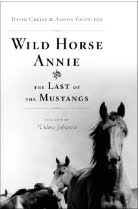








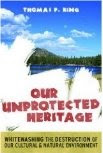



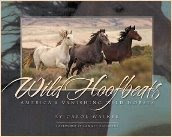




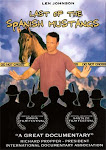





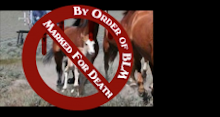
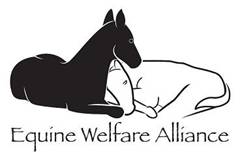
No comments:
Post a Comment